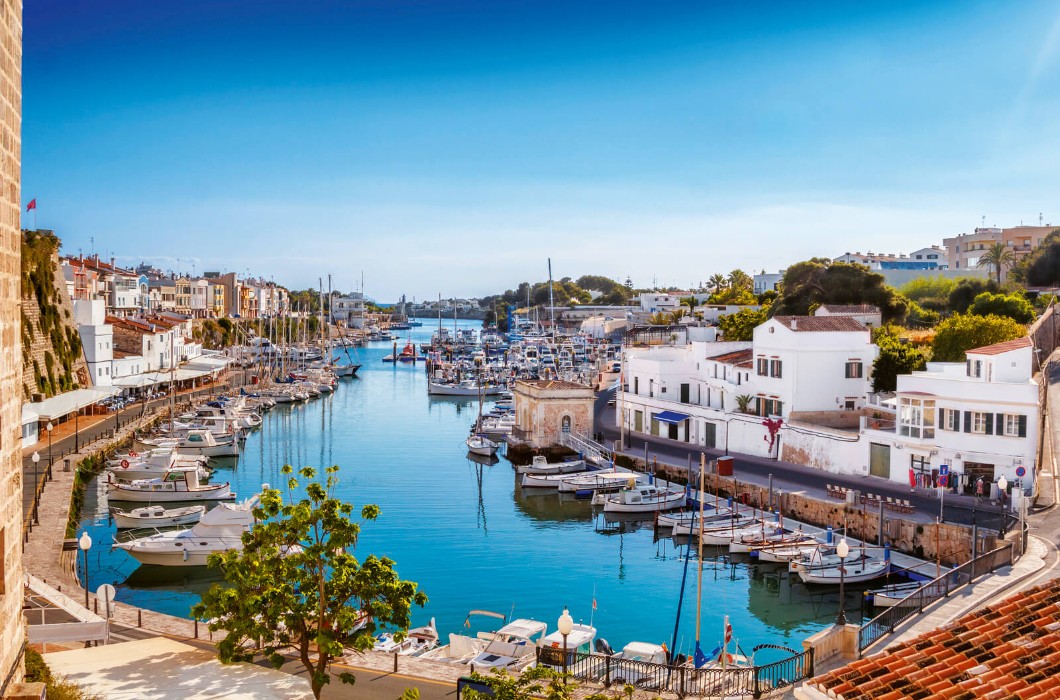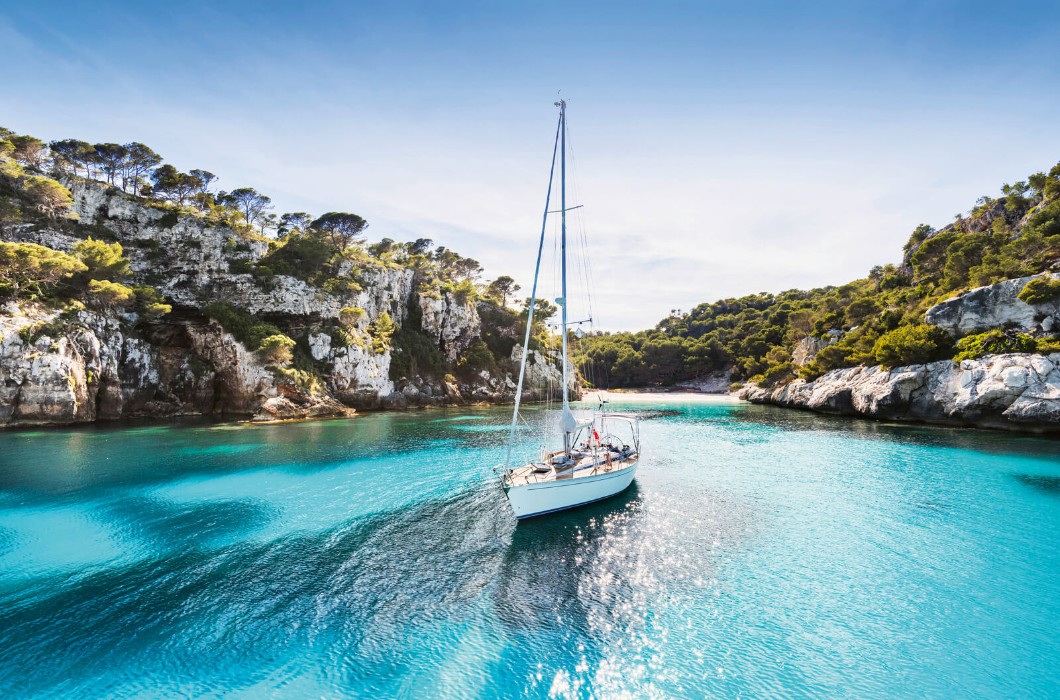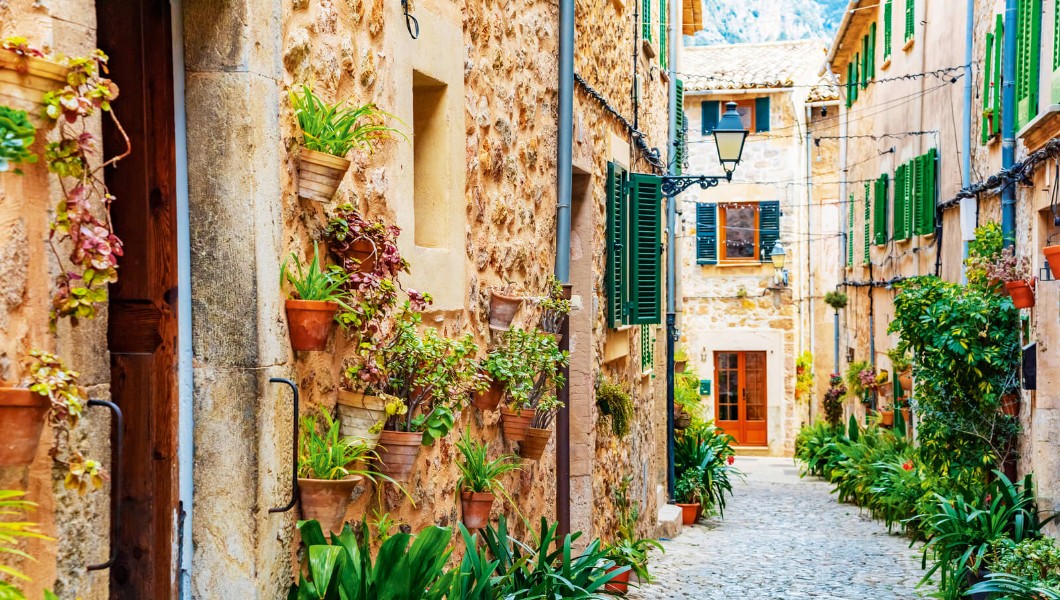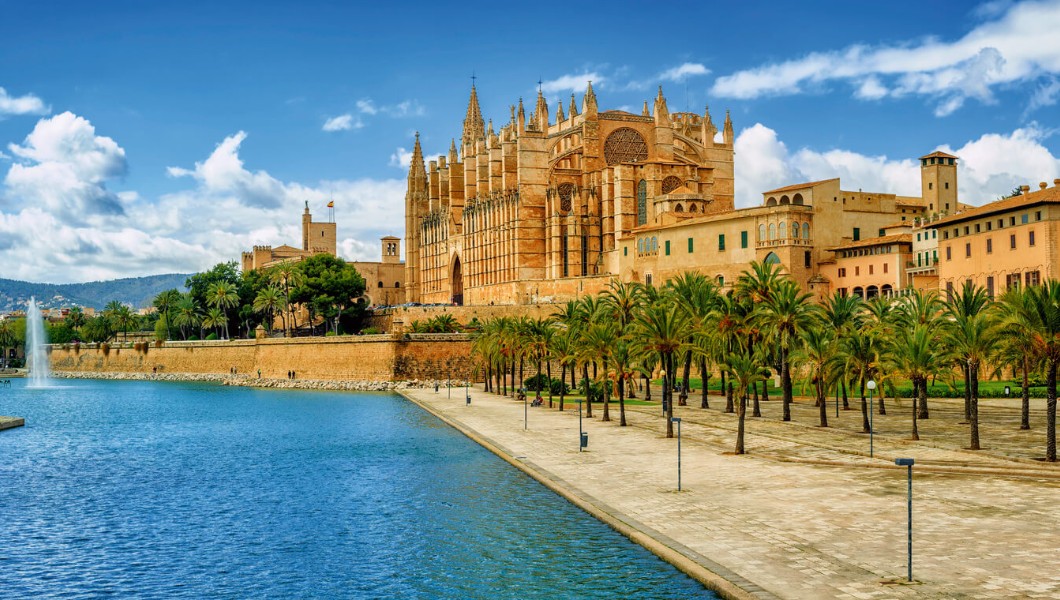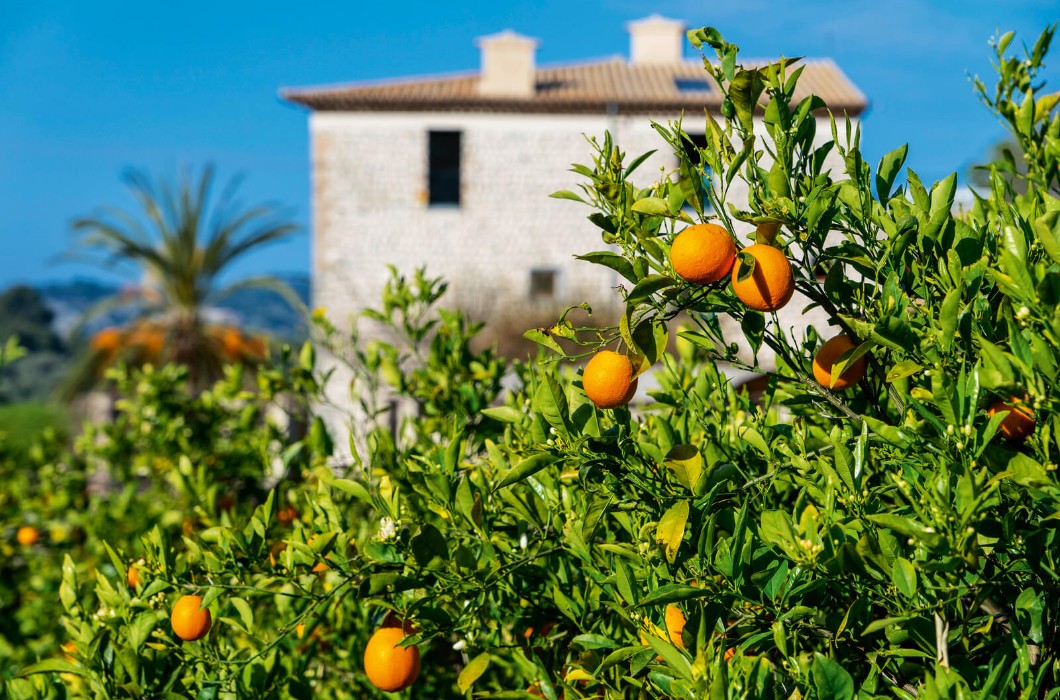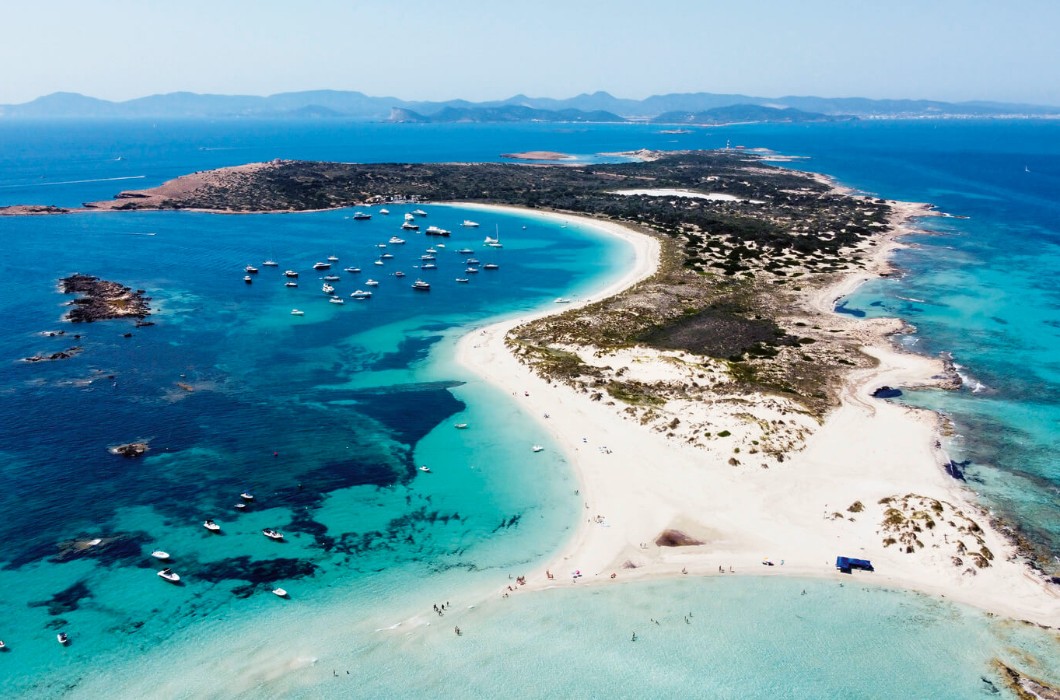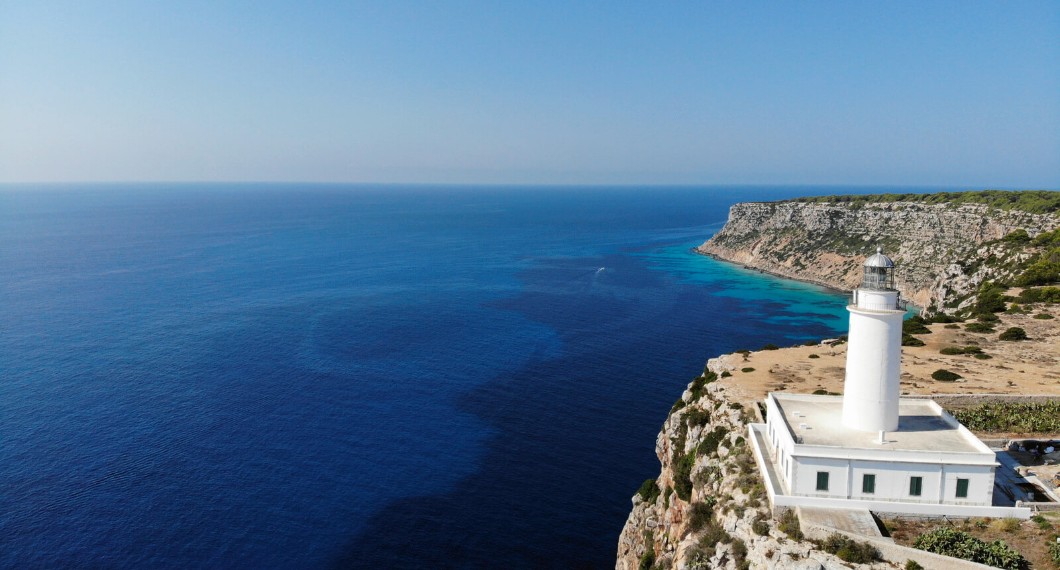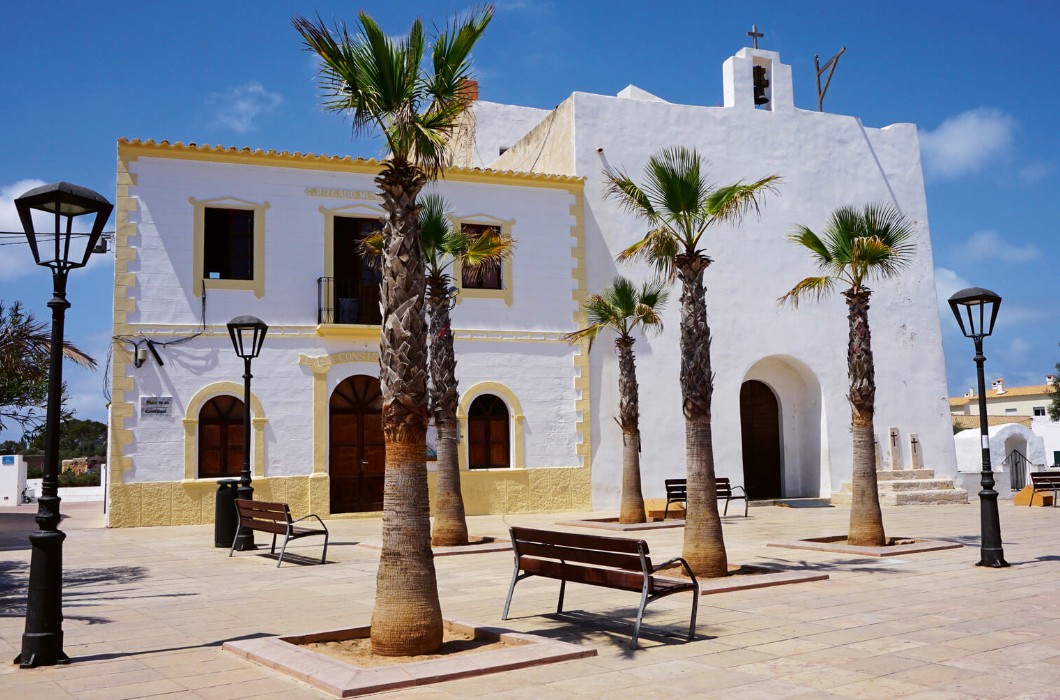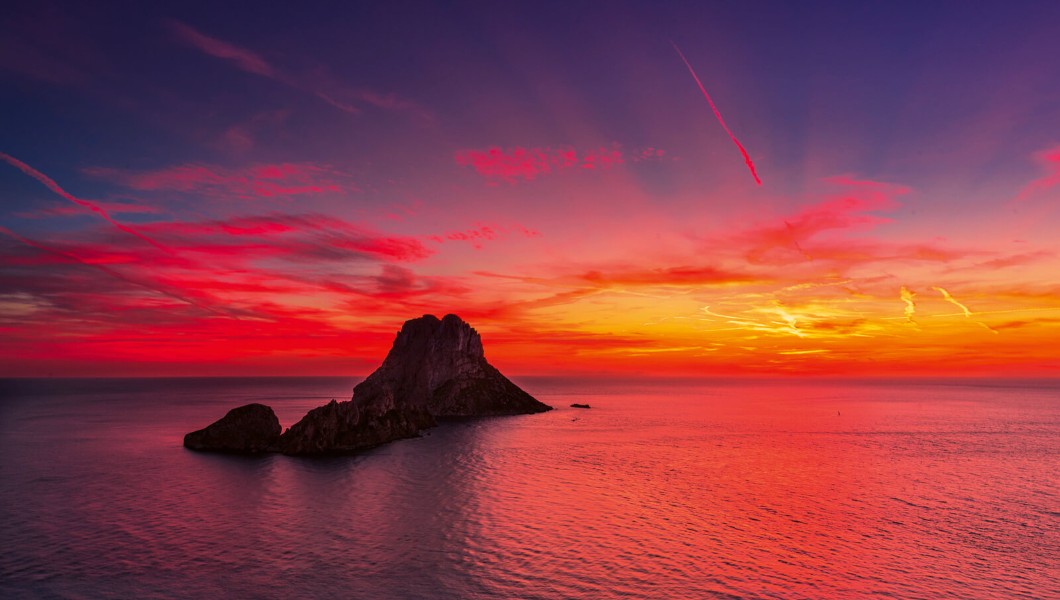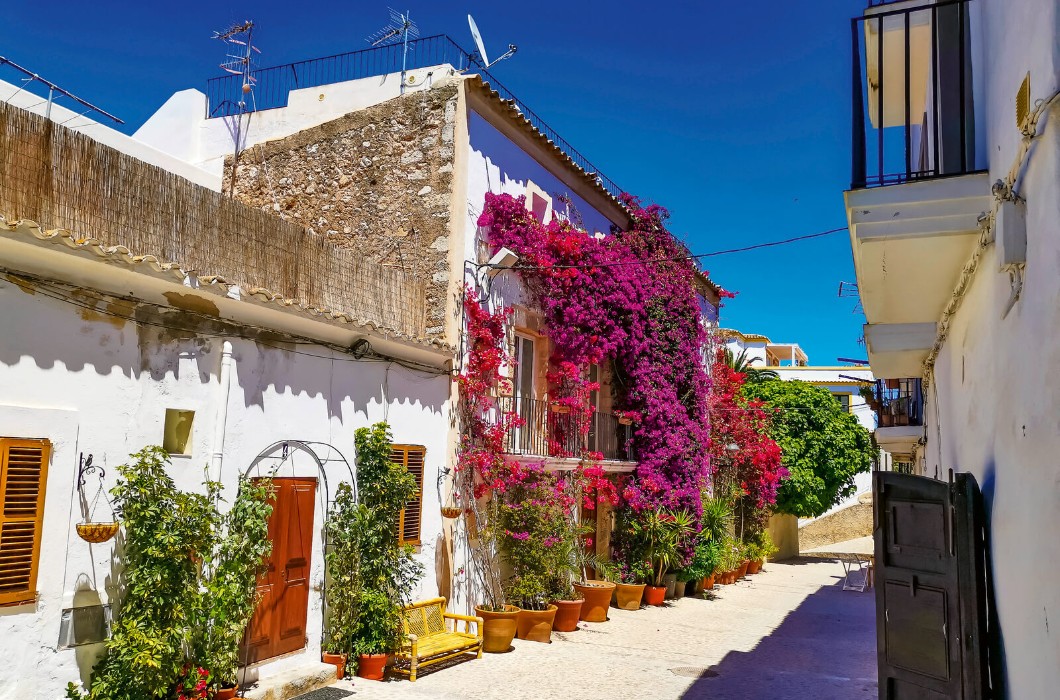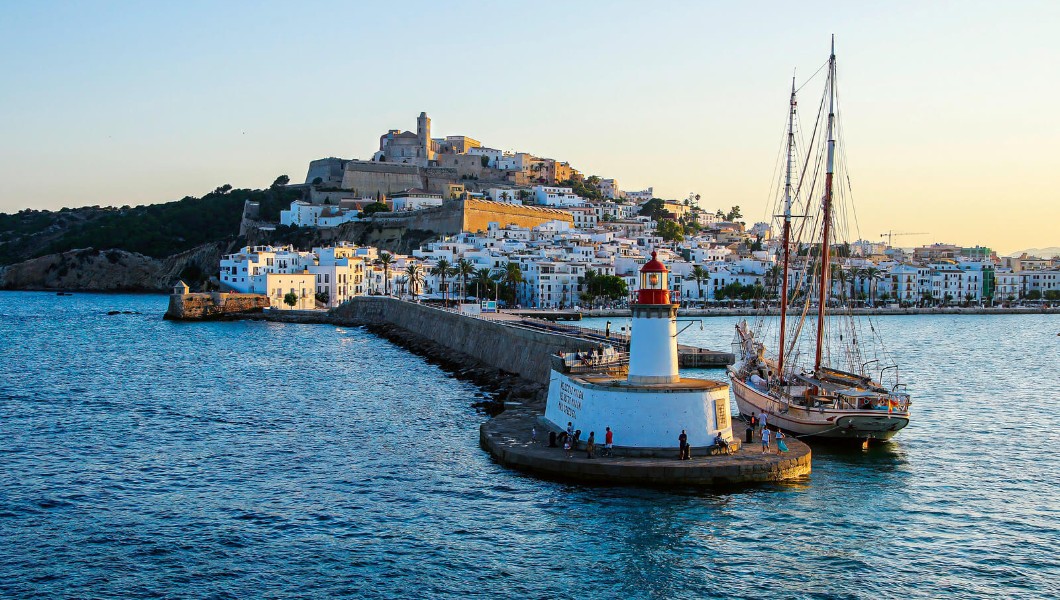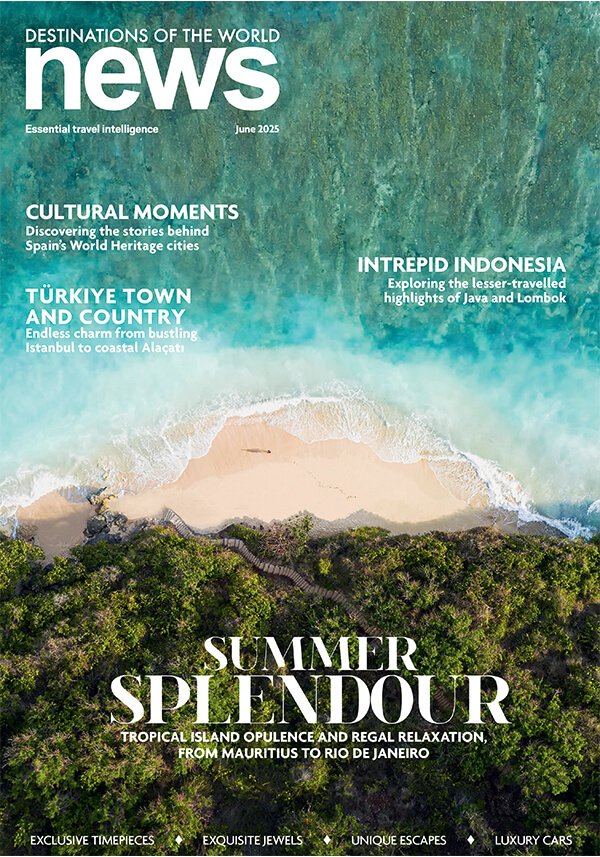MENORCA: LITTLE LUXURIES
Life slows down in little Menorca, where sleepy fishing villages and secluded calas lure travellers off the beaten track and ancient monuments whisper of times gone by. Lose yourself along miles of pristine coastline, home to some of the most spectacular beaches in the Mediterranean, where sailboats bob in crystal-clear waters and pine forests spill down to golden sands. The best way to stumble upon your own private stretch of paradise in this UNESCO biosphere reserve is by chartering a boat from island capital Mahón or historic Ciutadella on the opposite end of the island, affording the freedom to drop anchor and bask in the island’s natural beauty in a hidden bay or snorkel in the inviting turquoise waters.
Alternatively, lace up your hiking boots and follow the Cami de Cavalls, a 185km hiking trail that runs around the entire island, winding through shaded forests and rocky cliffs dotted with ancient watchtowers and hundreds of ruined settlements from the long forgotten Talaiotic people, who inhabited the island three thousand years ago. Discover their past in the Museum of Menorca in Mahón, where hundreds of relics shine a light on the history of the island, from its earliest settlers to the Viking, Roman, Islamic and modern European empires that all left their mark.
Wander the historic centre from Plaça d’Espanya and explore the bustling fish market and quiet alleyways where artisans make wooden ships and traditional sandals by hand. Make time to visit Hauser & Wirth Menorca, the Balearic outpost of the iconic art gallery that reopens in May, situated on Illa del Rei in Mahón harbour. At the opposite end of Menorca, narrow cobblestone streets run through historic Ciutadella, where plazas are lined with pretty cafes and bells toll from ancient churches. Feast on fresh seafood at a waterfront restaurant in the harbour or high in the historic quarter and watch the sunset from one of the gorgeous beaches on the outskirts of town; this laid-back island is guaranteed to win your heart.
MALLORCA: A CITRUS-SCENTED ESCAPE
Home to some of the most picturesque beaches in the Mediterranean, Mallorca is an island of powder-puff sands and cerulean shores. Pine forests and shrubs cover the craggy coast, climbing up to gentle hills and rocky promontories. Forgo the bustling beaches of Palma and head in search of sublime sands in hidden corners like Cala Mondragó, Cala Formentor or Caló des Moro, or rocky coves like Sa Calobra on the northwest coast.
Inland, Mallorca rises into the formidable Serra de Tramuntana, a magnificent mountain range that stretches for 90 kilometres from north to south. Recognised in 2011 as a UNESCO World Heritage site, the range is home to mountain lakes and towering peaks gathered around Puig Major, which dominates the scenery at 1,445m. Centuries-old olive trees and a web of ancient irrigation systems and dry-stone walls pepper the landscape, while sleepy towns and villages are home to monasteries, castles and country estates connected by hiking trails and ancient cobbled pathways.
Scenic roads wind across the island’s forested flanks and rolling hillsides, where citrus groves colour the landscape and ancient towns and villages like Valldemossa and Sóller lay frozen in time, idyllic backdrops for cyclists and golfers. Beyond the beach, Mallorca’s charismatic capital Palma is not to be missed. Escape the midday sun in the hallowed halls of Palma Cathedral, a Gothic masterpiece with soaring spires and beautiful stained-glass windows, or hike up to the 14th century Bellver Castle for sweeping views of Palma and the glittering Med.
For many, Mallorca’s true charm lies in its culinary culture. From freshly caught seafood in palm-thatched chiringuitos (beach shacks) and local delicacies in bustling markets, to high-end tapas in rooftop restaurants and sundowners in glitzy beach and yacht clubs, Mallorca is a gastronome’s delight.
FORMENTERA: A BEACON IN THE MED
Formentera, the smallest of the Balearic Islands, has a charm all of its own. Rising up from the paradisical beaches of the Es Trucadors peninsula on the northern coast to the towering cliffs of La Mola in the east and Puig d’en Guillem in the south, the landscape has captivated visitors and writers since time immemorial.
The island’s 18th century watchtowers were the first line of defence against attacks from the Barbary pirates of North Africa, sending up smoke signals to warn of an impending attack. Today, they remain as a symbol of the island’s maritime heritage alongside the incredibly photogenic lighthouses at three corners of the island.
La Mola stands at the edge of a cliff in the east of Formentera, 120 metres above the Mediterranean. Science fiction writer Jules Verne was obsessed with the island’s unusual shape — which resembles a giant fishhook or seahorse — and described La Mola as “a place from which you could measure the world”. Pretty La Savina in the west is the setting for spectacular sunsets that ignite the sky in fiery hues that frame its seashell silhouette, while Es Cap de Barbaria on the southernmost tip of the Balearic Islands is surrounded by cacti and hardy desert plants, battered by arid winds from the south.
But it’s Formentera’s beaches that contribute most to its appeal. In the south, Migjorn is an uninterrupted five-kilometre crescent of sandy coves, pebbly bays and rocky outcrops carved by winter winds and ocean currents, where wooden boathouses add a touch of local flavour to the natural scenery. At the opposite end of the island, Es Trucadors is a thin finger of wildflower-covered sand dunes flanked by the spectacular beaches of Ses Illetes and Levante, stretching five kilometres into the sea and almost touching the fine white sands and coastal grasslands of S’Espalmador island and Ibiza beyond.
If you can bear to leave the beach, the towns of Sant Francesc Xavier, Es Pujols and San Ferran are brimming with traditional restaurants, bougainvillea-covered archways and picturesque churches, and a handful of craft markets that showcase the island’s creative side. Small and imperfectly formed, Formentera is one of a kind.
IBIZA: LAND OF MYTH AND LEGEND
Ibiza, mercurial mistress of the Med, comes in many guises. There’s elegant Eivissa, the traditional Spanish fishing port whose UNESCO-listed Dalt Vila (Old Town) is a maze of cobbled streets, whitewashed buildings and pretty plazas surrounded by galleries and boutiques, and the quiet sanctity of the Cathedral of Our Lady of the Snows. Then there’s the Ibiza that Nostradamus claimed would be “the Earth’s final refuge”, a fortified bastion with impenetrable walls, lookout towers and mighty canon to protect against attacks from pirates and ascendant empires.
For many, Ibiza is the queen of the night: a land of vibrant nightlife, where endless evenings drift into dreamy days in laid-back beach clubs. But the wild child of the Med has come of age, and travellers are more likely to be seeking its ever-growing collection of luxurious hideaways and Michelin-starred restaurants than its infamous clubs. Beyond her storied capital, Ibiza is an island of rich history, enchanting landscapes and countless myths and legends, where swathes of picture-perfect coastline give way to fragrant juniper groves and pine-scented hillsides. On the southwest coast, the dramatic outline of Es Vedrà rises from the Mediterranean, a giant limestone monolith that has captured islanders’ imaginations for centuries. Home of the sirens that tried to lure Odysseus in Homer’s Odyssey, the birthplace of the Phoenician goddess Tanit and a source of mystical healing energy, the island has a magnetic allure, especially at sunset when the sky erupts in a symphony of colour.
Further south, the salt flats and beaches of Ses Salinas are part of a UNESCO-listed biosphere reserve that stretches from Ibiza to northern Formentera. As well as some of the island’s most spectacular beaches, Ses Salines d’Evissa I Formentera Natural Park encompasses meadows of seagrass that supports a teeming marine eco-system and is responsible for keeping the waters of the Balearic Islands crystal clear. Combined with fine white sand, swathes of coastal dunes and a handful of beach bars, this sun-soaked corner of the island is one of the finest in the Mediterranean.





